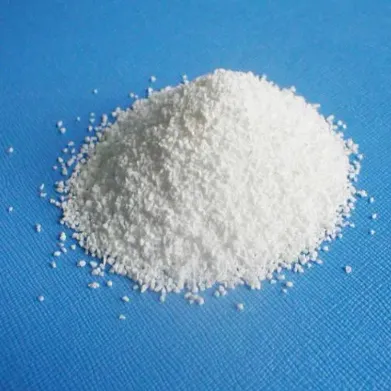

Nanomaterials Transform Numerous Fields
Nanomaterials can facilitate the creation of small-scale products and processes at the nanoscale. Some examples of the application of nanomaterials include electronics, nanomaterials can be used to produce faster and more efficient devices; in medicine, they can be utilized to develop targeted drug delivery systems; and in energy, they can improve energy conversion and storage.

Chlorfenapyr
Feb . 15, 2025 05:45
Back to list
Chlorfenapyr
Chlorfenapyr is a potent insecticide and acaricide, well-regarded in the agricultural and pest control industries for its effectiveness in managing a wide range of pests. Unlike many conventional insecticides, chlorfenapyr acts as a pro-insecticide, which means it requires activation by pests’ own enzymes to become lethally effective. This unique action mode makes it a topic of interest for both researchers and practitioners seeking sustainable pest management solutions.
Despite its advantages, the application of chlorfenapyr requires adherence to best practices to maximize its benefits while minimizing environmental impact. It’s crucial for users to follow label instructions meticulously, including appropriate dosing and timing of applications. Misuse or overuse could potentially lead to undesirable ecological consequences, including harm to non-target species. Chlorfenapyr's role in pest management also emphasizes the importance of integrating it with other control measures. Experts advocate for its inclusion in a broader integrated pest management (IPM) strategy, combining chemical, biological, and cultural practices to achieve sustainable pest populations. By relying on a single mode of action, users risk accelerating pest resistance. Thus, pairing chlorfenapyr with other control strategies is a best practice that aligns with contemporary goals of ecological stewardship and sustainable agriculture. Innovations in formulation technology have further enhanced chlorfenapyr’s usability and safety profile. Advances such as microencapsulation and water-dispersible granules have improved its application precision and reduced exposure risks to handlers and non-target organisms. These technical enhancements reflect ongoing research and development efforts focused on optimizing the balance between efficacy and environmental safety. In practice, users have documented firsthand experiences reflecting satisfaction with chlorfenapyr’s performance. Reports often note noticeable reductions in pest populations within days of treatment, with extended residual control contributing to long-term pest suppression. Such outcomes not only validate its effectiveness but also justify its inclusion in pest management plans aimed at achieving high levels of control with minimal application frequency. As the demand for sustainable and effective pest control solutions grows, chlorfenapyr stands out for its distinct mode of action, broad-spectrum effectiveness, and adaptability to various environments. By integrating it responsibly within a holistic pest management framework, stakeholders can leverage its strengths to protect crops, structures, and public health while upholding environmental integrity. In doing so, chlorfenapyr is positioned not just as a tool for today's challenges, but as a key component in the future of sustainable pest management.


Despite its advantages, the application of chlorfenapyr requires adherence to best practices to maximize its benefits while minimizing environmental impact. It’s crucial for users to follow label instructions meticulously, including appropriate dosing and timing of applications. Misuse or overuse could potentially lead to undesirable ecological consequences, including harm to non-target species. Chlorfenapyr's role in pest management also emphasizes the importance of integrating it with other control measures. Experts advocate for its inclusion in a broader integrated pest management (IPM) strategy, combining chemical, biological, and cultural practices to achieve sustainable pest populations. By relying on a single mode of action, users risk accelerating pest resistance. Thus, pairing chlorfenapyr with other control strategies is a best practice that aligns with contemporary goals of ecological stewardship and sustainable agriculture. Innovations in formulation technology have further enhanced chlorfenapyr’s usability and safety profile. Advances such as microencapsulation and water-dispersible granules have improved its application precision and reduced exposure risks to handlers and non-target organisms. These technical enhancements reflect ongoing research and development efforts focused on optimizing the balance between efficacy and environmental safety. In practice, users have documented firsthand experiences reflecting satisfaction with chlorfenapyr’s performance. Reports often note noticeable reductions in pest populations within days of treatment, with extended residual control contributing to long-term pest suppression. Such outcomes not only validate its effectiveness but also justify its inclusion in pest management plans aimed at achieving high levels of control with minimal application frequency. As the demand for sustainable and effective pest control solutions grows, chlorfenapyr stands out for its distinct mode of action, broad-spectrum effectiveness, and adaptability to various environments. By integrating it responsibly within a holistic pest management framework, stakeholders can leverage its strengths to protect crops, structures, and public health while upholding environmental integrity. In doing so, chlorfenapyr is positioned not just as a tool for today's challenges, but as a key component in the future of sustainable pest management.
Prev:
Next:
Latest news
-
Uncover the Benefits of Sodium ChlorateNewsJun.24,2025
-
Sodium for Sale: Your Essential ResourceNewsJun.24,2025
-
Raw Materials in Chemical IndustryNewsJun.24,2025
-
Potassium Hydroxide: Versatile Solutions for Your NeedsNewsJun.24,2025
-
Organic Pesticides and Chemical Raw Materials: Building a Sustainable FutureNewsJun.24,2025
-
Discover Premium Chlorine Tablets TodayNewsJun.24,2025
-
Zinc for Sale: Your Essential ResourceNewsJun.04,2025
Hot Products


















